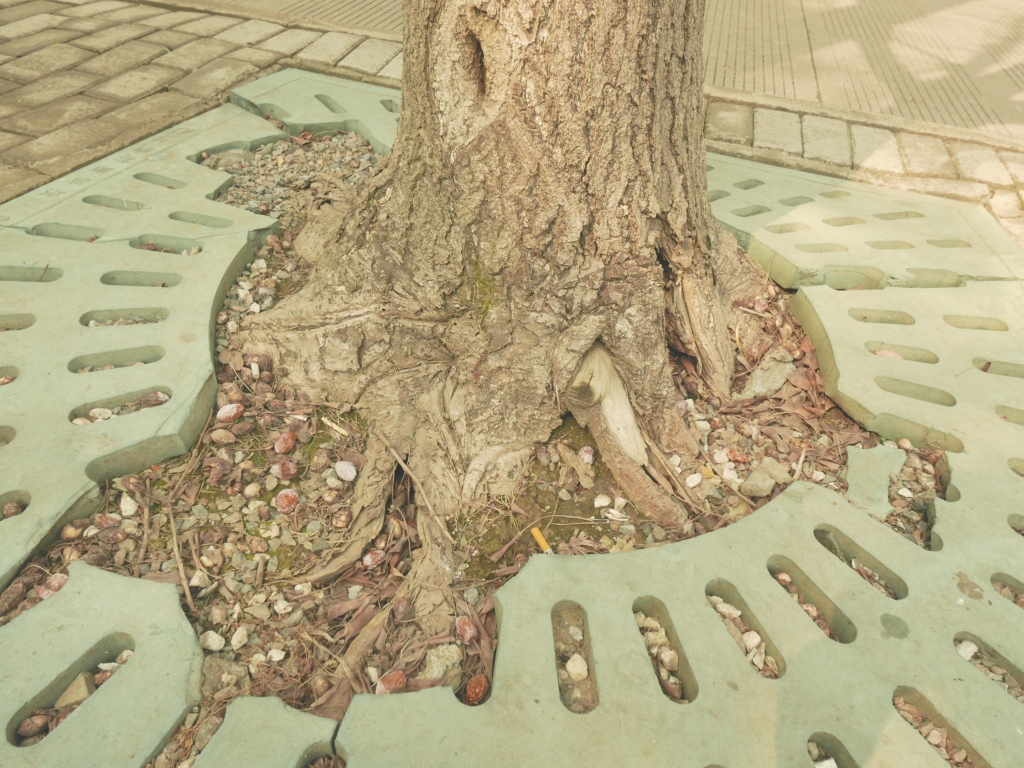Yesterday, we had an amazing first workshop of posthuman fabulations at Duke University organised by Carlos Rojas and Mingwei Song, including our panel on flora and fauna (and fungi!):

Zhange Ni shared her entangled reading of The Little Mushroom (Xiao Mogu 小蘑菇) by Yishisizhou 一十四洲, a danmei (耽美) male-male romance in which humanity is fencing itself in against infection from the non-human Other in the form of mushrooms that can shapeshift to look like humans. In this novel, humanity’s only chance of survival is to unite into a single being becoming the kind of collective lifeform that fungi represent, yet without the vital cross-species interaction that characterises fungal symbiosis with trees and other plants via mycorrhiza. Hearing prof Ni’s talk, I cannot help but wonder: if humans must adapt to a more fungal way of life and mushrooms can successfully impersonate humans, wherein lies the essential difference that the people of the novel are so eager to safeguard?
Corey Byrnes outlined Zhou Zuoren’s interesting progression from pre-evolutionary beasts (兽 shou) over animals (动物 dongwu) and on to humans (人 ren). I find this positioning of beasts as a human Other outside a shared evolutionary history interesting because they become a kind of organic antipode to the AI of contemporary SF. Beasts and AI both function as literary anti-images to the humanism of humans. Where AI are essentially electronic reproductions of the human brain, and beasts represent the physical drives and desires beyond the mind’s control, both lack the moral imperative of the human species. Yet as much SF and speculative fiction explore, the beasts and the AI are all too often more human (and more humane) than the human.
I talked about human-plant chimeras in works by Chi Hui 迟卉, Dorothy Tse 謝曉虹, and Yan Ge 颜歌, and how their duality of being challenge the centrality of the human body and brain in defining (intelligent) life, the taxonomic boundaries of single species, and the notion of individuality. In my essay written for the workshop, I begin by analysing Chi Hui’s迟卉 short story “The Rainforest” (雨林), in which classical antagonisms of plant horror are given a sharp twist when the human protagonist is able to merge with the botanical Other with the aid of nanotechnology. Secondly, I consider the appearance of bitter gourds on the pale skin of several curiously immobile and silent girls found on a building site in Dorothy Tse’s 謝曉虹 “Bitter Gourds” (苦瓜), and how they spread through the narrative as bodily manifestation of the repressed memories, sexualities, and political protests. Finally, I look at the commodification of gendered tree-people in Yan Ge’s 颜歌 “Flourishing Beasts” (荣华兽) as chimeras that fundamentally challenge the logic of anthropocentric classifications, highlight the posthuman question of what really constitutes a species, and presents taxonomic gatekeeping as a form of ontological violence.
Panel 1-Flora & Fauna
11:00 AM—12:30 PM (EDT)
Astrid Moller-Olsen, “Growing Together: Plant-human Chimeras in Contemporary Fiction”
Zhange Ni, “The Mushroom beyond the End of the World: Posthumanism and the Sci-fi Romance The Little Mushroom”
Corey Byrnes, “The Limits of Posthumanism and the Sempiternal Animal”
(Chair and Discussant, Carlos Rojas)
Panel 2-Humanism & Posthumanism
2:00-3:30 PM (EDT)
Carlos Rojas, “Dung Kai-Cheung’s Beloved Wife and Fungible Consciousness”
Nathaniel Isaacson, “Symbiosis and Synesthesia in the Fiction of Chi Ta-wei”
Hua Li, “Affirmation of Humanism amidst Posthuman Episodes in Chen Qiufan’s Waste Tide and Balin”
(Chair and Discussant, Mingwei Song)

Fascinating set of synopses. I especially liked your take on Corey Byrnes’ work! (Small typo: “…and beats represent…”.)
Thanks! Typo corrected and praise appreciated:-)
Pingback: Plants in Chinese Landscapes of Repair | 小说 XIAOSHUO 小說